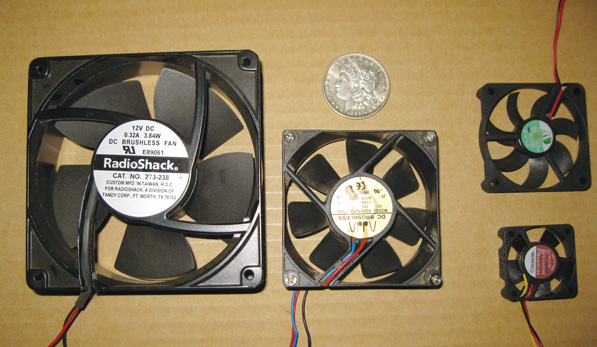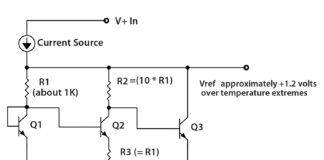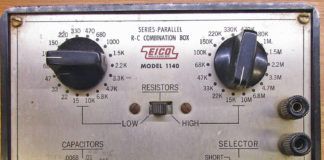
>With the single exception of gasoline and oxygen inside a cylinder being converted to heat, noise and power, heat is not our friend in an airplane. We take great pains to make cool air flow around, through and over the outside of the cylinders to keep them as cool as reasonably possible. We have oil coolers to take the engine heat and pass it off to the atmosphere. We have blast tubes on some of our oil screens/filters to cool them down, and we have ram air on some of our electronics to keep them cool…sort of.
It is the sort of that bothers me. In anything electronic, heat is our sworn enemy. Why? Because for each 10 C (18 F) rise in temperature, the odds of any one component failure doubles. Given the hundreds and thousands of components in a radio or other electronic goodie, that causes the MTBF (mean time between failure) to go way, way down if the radio gets hot.
Why would the radio get hot? Because just as in the engine, we waste roughly 50% of our electrical power as heat when the radio is running wide open (putting out transmitter or speaker power) and 100% as heat when the radio is not transmitting or receiving but is in standby or squelched mode (in engine-speak we call this idle).
The challenge is to keep electronic equipment as reasonably cool as possible. However, that ram air we talked about does not come free. Generally it comes in the form of a small air scoop on the side of the fuselage plumbed hither and yon around the radios with tubing of some sort guiding the air where it needs to go. That, in turn, creates drag, which is overcome by engine thrust that has to work that much harder (hotter) to make the electronics cooler. Not a good trade-off.
The second problem with ram air is that you cant easily control which radio gets the lions share of the air. Pneumatic plumbing is an art that most of us don’t possess, nor should we have to. It would be nice if we could blow cool air on radios that get hot and not waste energy on radios that dont. And if we are going to do it electrically, we need to do it without wasting more power in the cooling device than we gain in the cooling.
Case Logic
Enter the computer case fan. Computer manufacturers found out several dozen years ago that cooping their billion-transistor processors (Intel Xeon series, 1.9 billion transistors in each IC) up inside of a metal case quickly french-fried either the processor or nearby components. Cooling the processor and the whole internal structure of the computer quickly became an art of using the right fan in the right place to blow relatively cool room air into, over and around the innards of the computer.
Avionics peddlers haven’t quite caught on to this new technology, so as a loyal experimenter, Im going to share some secrets with you. First, 90% of the computer fans run directly from 12 volts DC (i.e., aircraft bus voltage). Some 5% run from 24 volts (also bus voltage in some aircraft), and 5% run from 5 volts. Say what? I can run an inexpensive fan directly from the same bus that is powering my radio? Yep. Thats what it means. But aren’t fans inherently noisy, both electrically and acoustically? No. Computer gurus found out a long time ago that their toys were susceptible to electrical noise, just like airplane radios. Indeed, some of the early computers used frequencies comparable to our nav and com bands, and those machines would not tolerate sparks and such. Todays machines are even more susceptible to noise.
Compare the common generator or alternator to the computer fan. Generators and alternators both have brushes that carry the electrical current to the rotor. These brushes create sparks, and those sparks create noise. However, the micropower computer case fans use brushless DC motors where the coils that drive the motor are stationary (stator) and the magnets that run the rotor are contained on the fan blade housing itself. These magnets are drawn, one by one, to each coil of the stator in turn, and round and around we go with no sparkies.
Feel the Noise
Most computers are used in relatively quiet locations, so acoustic noise has also been addressed. Most fans in use today rank somewhere between 25 and 40 dBA. What is a dBA? Sigh. Away back in 1933, Bell Labs (Google Fletcher-Munson) did a series of experiments to find out how people hear. Then they built a whole bunch of instruments that let the instrument hear like a human being does. They called this process A-weighting. The fact is that the human ear is most sensitive at a frequency of about 3000 Hz (fan marker, inner marker or high G on a piano), and it falls off rather rapidly at lower and higher audio frequencies.
The plain fact is that the more air the fan pushes, the louder it will be, all other things being equal. For example, an 80mm fan that pushes 40 CFM (cubic feet per minute) has a rating of 34 dBA, while one that pushes only 25 CFM has a rating of 28 dBA. What does this mean in the real world? It takes 10 dB of difference between two sounds to appear to have doubled the noise, so these two fans wouldn’t appear to have much if any difference in noise.
How loud is 34 dBA? Well, 0 dBA is the threshold of hearing, 20 dBA is the famous quiet whisper at 5 feet of the aviation medical exam, 40 dBA is the average residence, 60 dBA is an average conversation and 120 dBA is the front seat at a Stones concert. The range, in acoustic (audio) power, between 0 dBA and 120 dBA is a trillion to one.
The computer fan is somewhere between Docs whisper to you in the exam room and the average residence. Not to worry about the average light aircraft cabin; a 1968 FAA study showed an average of 90 to 105 dB of noise with the aircraft in flight, the point being that you will never hear a computer fan in an aircraft unless the rascal is shut down, in the hangar, at midnight on a clear night.
A few more points, if you please. Besides voltage, airflow and noise, we need to be picky about the following: size (40mm square to 120mm square are common sizes with 80mm being the most popular), current draw (depends on CFM, but 100 to 200 mA is a good average) and bearing (sleeve is OK, but ball bearing is better). Believe it or not, some folks offer them with LED lamps in them.
Most computer parts stores will have fans, but if you are contemplating mail order, Jameco (www.jameco.com) has three pages (in tiny type) of them, and Xoxide has the lighted ones and others.
A couple of more secrets for you and we are done. First, the fan should pressurize the radio (blow air in, not out) through a foam filter to keep dust out. Second, the fan may have two or three wires. Black is ground, red is +12 and the third wire is for the computer to monitor the speed of the fan. Slice it off if you like.
Next month? No use letting the fan run when it is not needed. After all, 12 volts at 200 mA is 2.4 watts that you don’t need to burn, so lets make a cheap and dirty fan controller.













